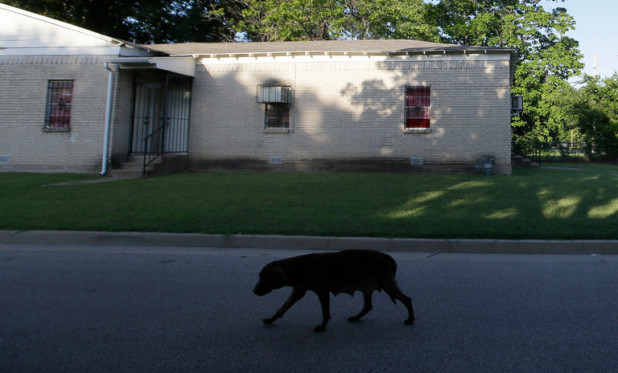Andrew Anglin
Daily Stormer
August 7, 2016
Anyone who’s been to a third world country knows that one of the hallmarks of streets in third world countries is packs of roaming, feral dogs.
This is one of the ways third world countries are better than America: there is hardly anything more invigorating than waking up in the morning and having to fight off a pack of feral dogs while on your way to work.
Finally, this interesting tradition has made its way to America, and we too can have this fascinating element added to our daily routine.
As consultants drove through the streets of southern Dallas this summer to document the city’s increasing loose dog population, they found some residents walking with sticks in hand, in case they had to fend one off.
Residents of the southern parts of the city, home to some of Dallas’s poorest neighborhoods, have complained for decades about roaming dogs, whether stray or left free to wander by owners. On Thursday, the Boston Consulting Group, hired by the city, released a report that estimated there were 8,700 loose dogs in the area, representing the first time officials had tried to quantify the problem.
“It’s not that it’s 24/7, that there’s constantly dogs out and people can’t even leave their house,” Peter Brodsky, the chairman of the Dallas Animal Advisory Committee, said in an interview. “But it is a prevalent enough problem that it is really impeding people’s quality of life, such that there’s diminished walking down the street. Sometimes you can’t go into a park.”
The issue gained increased attention after Antoinette Brown, 52, was mauled to death by six dogs in May. The authorities found her with more than 100 bites across her body, according to local news reports.
The consultants’ report said dog bites in the city had increased 15 percent a year since 2013.
…
“Dallas has a dog problem because we have a people problem,” said J.P. Bonnelly, a co-founder of the Street Dog Project, which picks up stray dogs and gets them medical care to ready them for adoption.
Loose dogs are more common in poorer communities throughout the United States than some people realize, said Amanda Arrington, director of the Pets for Life program of the Humane Society of the United States. The causes and intensity of the problem vary, but the low-income areas share little access to veterinary care, few big-box stores or pet supply retailers, and a lack of basic information or services for pet owners.
In Dallas, the difference between the poverty-stricken south and the more affluent north is stark.
The reason for this, of course, is a total friggin mystery.
Source: US Census Bureau and Synergos Technologies, Inc.
The consultants found 135 loose dogs during their census, which covered 176 linear miles of southern Dallas and was conducted between 6 a.m. and 7:30 a.m. from June 28 to Aug. 2. They found just one in the 59 linear miles of northern Dallas covered by the same census.
In the north, 80 percent of dogs are spayed or neutered, compared with 15 percent in the south, the report said.
There are just three veterinarians in all of southern Dallas, making it difficult for pet owners to access care or get their pets spayed or neutered, Mr. Brodsky said.
Ah, yes.
The racist government is refusing to build veteranary clinics in brown neighborhoods.
White supremacy at its finest.
smdh 2016
 Daily Stormer The Most Censored Publication in History
Daily Stormer The Most Censored Publication in History





